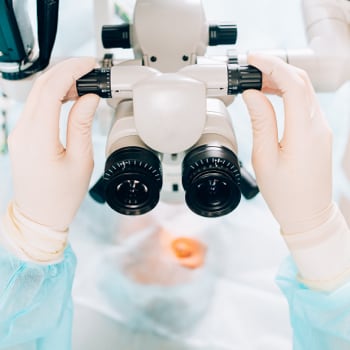The eyes are often sensitive. When something goes wrong, some of the first symptoms you’ll notice are redness and vision issues. Both pink eye and styes—2 extremely common eye conditions—can cause these problems. So what’s the difference between pink eye and styes?
The two might seem similar at first, but they’re actually fairly different conditions. Pink eye affects the whites of your eyes, while styes form around the edge of your eyelids. Each has different causes, symptoms, and treatments.
What Is Pink Eye?
Pink eye, also called conjunctivitis, affects the conjunctiva. This is the thin and transparent tissue covering the whites of your eyes and the lining of the eyelids. When this tissue is inflamed, the blood vessels expand and become more visible. This gives your eyes a pink or red appearance.
Pink eye can develop due to all kinds of factors, including:
- Allergic reactions
- Bacterial infections
- Viruses
- Exposure to irritants
Usually, pink eye causes irritation, inflammation, and excessive tearing. It’s more common than most people think, and it can be extremely uncomfortable.
Are There Different Types of Pink Eye?
Pink eye isn’t just one condition. It can usually be broken down into 3 main categories: allergic, bacterial, and viral. Each of these types has its own symptoms and treatment.
Allergic Conjunctivitis
Allergic conjunctivitis is the body’s response to an allergen. Pet dander, pollen, mold, and other common allergens can all set off allergic reactions. This type of pink eye isn’t contagious—it’s just the body’s attempt to flush out something it thinks is harmful.
However, it can still make your eyes feel miserable. Allergic pink eye often causes:
- Red, watery eyes
- Intense itching
- Swelling around the eyes
If you notice other allergy symptoms, like a runny nose and scratchy throat, it’s likely allergic conjunctivitis. You can find relief through eye drops and over-the-counter antihistamines. If your symptoms are persistent, talk to your optometrist for personalized advice.
Bacterial Conjunctivitis
Bacterial conjunctivitis is another common type of pink eye. It develops when bacteria infect the conjuctiva. Bacterial pink eye is also highly contagious and easily spreads in close-contact environments like schools or workplaces.
With bacterial conjunctivitis, you might notice:
- Persistent redness
- Yellow or greenish discharge, sometimes crusting over
- Swelling or tenderness
To reduce these symptoms, you’ll need to visit an optometrist. They can prescribe antibiotic eye drops and give you advice on managing symptoms while the medicine works. Eventually, the infection should clear up, and your discomfort should fade.
Viral Conjunctivitis
Viral conjunctivitis develops from a viral infection. This is usually linked to colds and respiratory illnesses. Like bacterial pink eye, viral pink eye is extremely infectious. Proper care is essential to preventing the spread of this condition.
You can recognize viral pink eye by:
- Watery eyes
- Sensitivity to light
- Burning or gritty sensation
Viral pink eye is tricky. Antibiotics don’t work for viruses—any treatment is around reducing symptoms while your body deals with the virus. Your optometrist can give you personal advice on finding relief from your symptoms, like special eye drops or cool compresses.
What Is a Stye?
Styes are a different condition entirely. They form when bacteria infect an oil gland or hair follicle along the edge of the eyelid. Instead of general inflammation, a stye is a localized infection that eventually causes a small red bump on the eyelid itself.
Styes often develop due to:
- Touching your eyes with unwashed hands
- Using old makeup
- Not cleaning your eyelids properly
Styes are often sensitive to the touch. You’ll likely notice visible signs of a stye before any uncomfortable symptoms.
It’s important to note you should never pop a stye. They’re filled with bacteria, so, when they’re popped, they spread bacteria around. These bacteria can then infect other parts of the eye and. It’s a much better idea to visit an eye care professional for relief.

How to Recognize a Stye
Styes have their own distinct symptoms. Usually, a visible red bump develops near the edges of the eyelid. This bump may or may not have a small amount of pus buildup. You can recognize a stye by:
- Pain or tenderness around the area
- Swelling in the eyelid
- Sensitivity when blinking or touching the bump
If large enough, a stye can cause vision issues and press on the eye. However, unlike pink eye, styes don’t cause widespread eye redness or itching. The symptoms should be localized to the area immediately surrounding the visible bump, rather than the whole eye.
If you develop a stye, visit your optometrist. They can help clean the area and, if needed, professionally drain the stye. They’ll also give you advice on preventing styes in the future to keep your eyes healthy and bacteria-free.
Where to Go for Professional Eye Care
Your eyes deserve proper attention—especially if you’re dealing with irritation and redness. It’s easy to mistake styes and pink eye for one another, but the treatments vary significantly. There isn’t a universal solution for both, and you’ll need a professional’s help.
So if you’re dealing with discomfort, come see our team at Great Hills Eye Care. Our team is ready to help take care of your eyes and vision. Book your appointment with us today—we know how to help!














